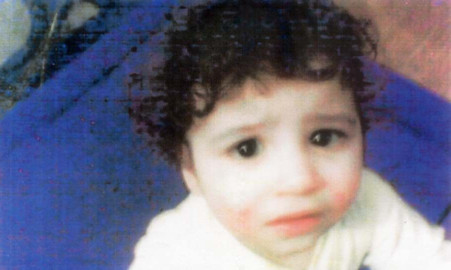A UK Government minister has expressed his “deep concerns” over a serious case review into the death of a four-year-old boy who was starved by his mother, saying it has failed to fully explain “missed opportunities to protect children in the house”.
Children’s Minister Edward Timpson was responding to the publication of the review into the case of Hamzah Khan, whose decomposed body was found in a cot in his Bradford home in 2011, almost two years after he died.
Mother-of-eight Amanda Hutton, 43, was jailed for 15 years last month after she was found guilty of Hamzah’s manslaughter and neglecting five of her other children.
At her trial it emerged how a range of agencies had contact with her family but no one spotted the danger the children were in.
The serious case review into that contact concluded Hamzah was “invisible for almost a lifetime”.
The minister wrote to Professor Nick Frost, who chairs the Bradford Safeguarding Children Board, saying: “I have deep concerns over the Hamzah Khan serious case review.
“In particular, I am concerned that it fails to explain sufficiently clearly the actions taken, or not taken by children’s social care when problems in the Khan family were brought to their attention on a number of occasions.”
Mr Timpson set out a series of questions he believed needed answering relating to the contact different agencies had with Hutton and her family.
He said: “All of these were missed opportunities to protect the children in the house.
“It is tragic beyond words that by the time a health visitor did trigger concerns about the whereabouts of the younger children in the household, who were missing from health and education services altogether, Hamzah Khan was already dead.”
At a press conference in Bradford, Professor Frost denied the report he ordered was a “whitewash” and stressed that it had been undertaken by independent people.
He said: “It’s not a whitewash. I will undertake the action requested by the minister. We are totally committed to transparency in this case.”
Alcoholic Hutton was living in “breathtakingly awful” conditions with five of her young children as well as Hamzah’s mummified remains when shocked police entered her four-bedroom house in September 2011.
A jury at Bradford Crown Court found she had allowed Hamzah to starve to death in December 2009 and left his body in a cot with a teddy.
The remains were only discovered due to a rookie police community support officer’s tenacious pursuit of a minor antisocial behaviour complaint because she knew something was wrong.
The family was known to all the main agencies, partly due to a long history of violence Hutton suffered at the hands of Hamzah’s father, Aftab Khan.
